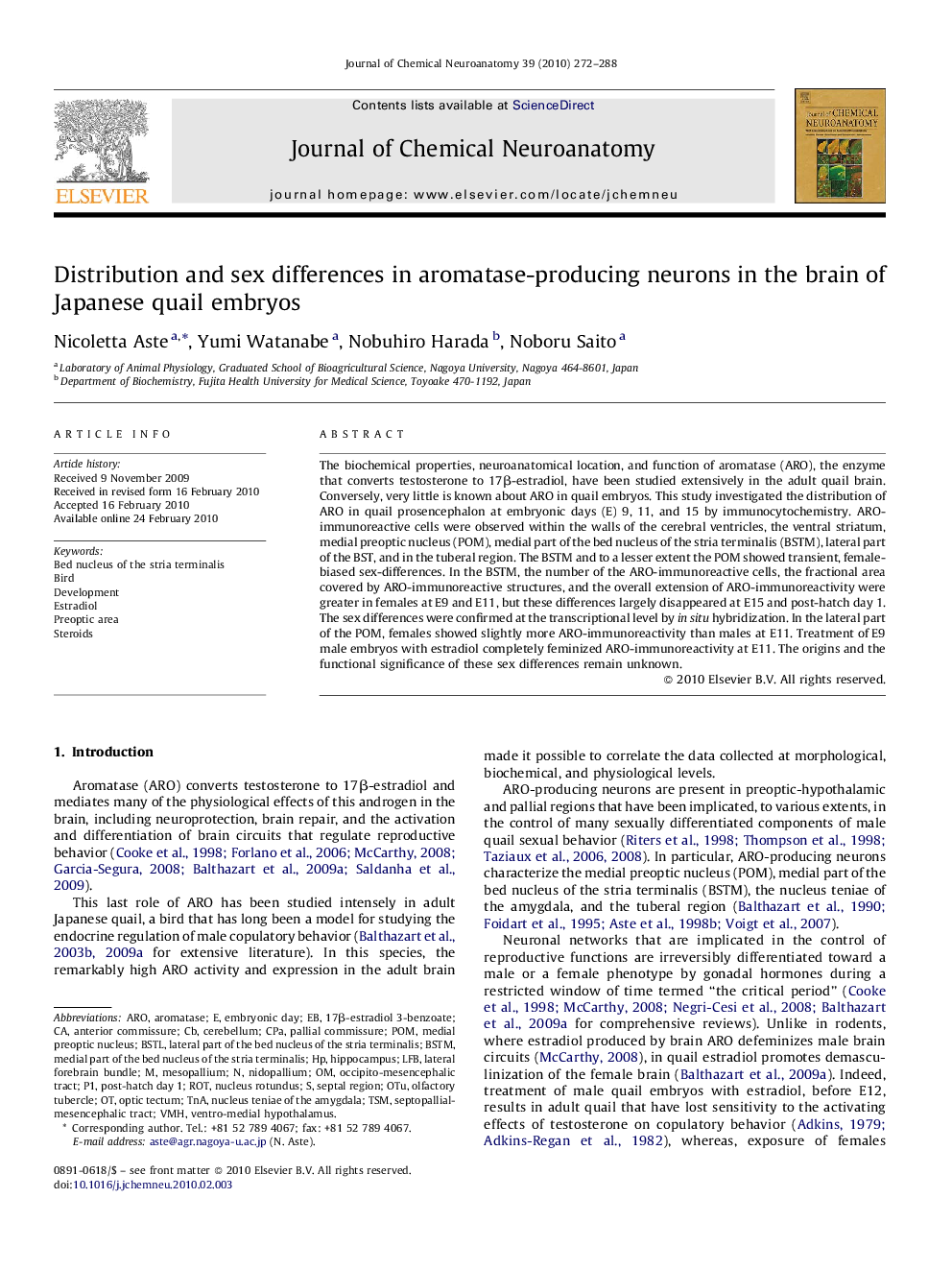| کد مقاله | کد نشریه | سال انتشار | مقاله انگلیسی | نسخه تمام متن |
|---|---|---|---|---|
| 1989139 | 1063567 | 2010 | 17 صفحه PDF | دانلود رایگان |
عنوان انگلیسی مقاله ISI
Distribution and sex differences in aromatase-producing neurons in the brain of Japanese quail embryos
دانلود مقاله + سفارش ترجمه
دانلود مقاله ISI انگلیسی
رایگان برای ایرانیان
کلمات کلیدی
TSMBSTLMesopalliumARONidopalliumLFBtNABSTmPOMCPAVMHOTU - OTaromatase - آروماتازEstradiol - استرادیولSteroids - استروئیدlateral forebrain bundle - بسته نرم افزاری پروستات جانبیOlfactory tubercle - تومور رحمیDevelopment - رشدRot - روتembryonic day - روز جنینیOptic tectum - سقف نوریCerebellum - مخچهPreoptic area - منطقه Preopticseptal region - منطقه سپتومNucleus rotundus - هسته rotundusbed nucleus of the stria terminalis - هسته تخت ترمینال های استریmedial preoptic nucleus - هسته پیشوپتیک مدیاHippocampus - هیپوکامپ Bird - پرندهanterior commissure - کمربند قدامی
موضوعات مرتبط
علوم زیستی و بیوفناوری
بیوشیمی، ژنتیک و زیست شناسی مولکولی
زیست شیمی
پیش نمایش صفحه اول مقاله

چکیده انگلیسی
The biochemical properties, neuroanatomical location, and function of aromatase (ARO), the enzyme that converts testosterone to 17β-estradiol, have been studied extensively in the adult quail brain. Conversely, very little is known about ARO in quail embryos. This study investigated the distribution of ARO in quail prosencephalon at embryonic days (E) 9, 11, and 15 by immunocytochemistry. ARO-immunoreactive cells were observed within the walls of the cerebral ventricles, the ventral striatum, medial preoptic nucleus (POM), medial part of the bed nucleus of the stria terminalis (BSTM), lateral part of the BST, and in the tuberal region. The BSTM and to a lesser extent the POM showed transient, female-biased sex-differences. In the BSTM, the number of the ARO-immunoreactive cells, the fractional area covered by ARO-immunoreactive structures, and the overall extension of ARO-immunoreactivity were greater in females at E9 and E11, but these differences largely disappeared at E15 and post-hatch day 1. The sex differences were confirmed at the transcriptional level by in situ hybridization. In the lateral part of the POM, females showed slightly more ARO-immunoreactivity than males at E11. Treatment of E9 male embryos with estradiol completely feminized ARO-immunoreactivity at E11. The origins and the functional significance of these sex differences remain unknown.
ناشر
Database: Elsevier - ScienceDirect (ساینس دایرکت)
Journal: Journal of Chemical Neuroanatomy - Volume 39, Issue 4, July 2010, Pages 272-288
Journal: Journal of Chemical Neuroanatomy - Volume 39, Issue 4, July 2010, Pages 272-288
نویسندگان
Nicoletta Aste, Yumi Watanabe, Nobuhiro Harada, Noboru Saito,